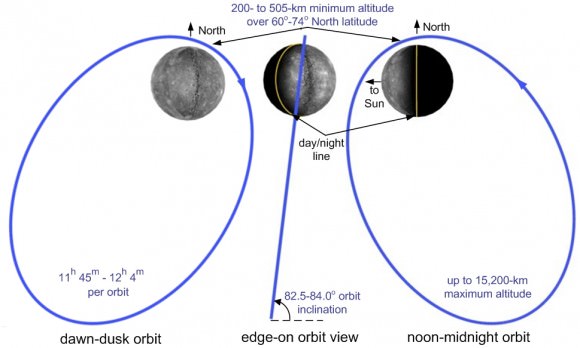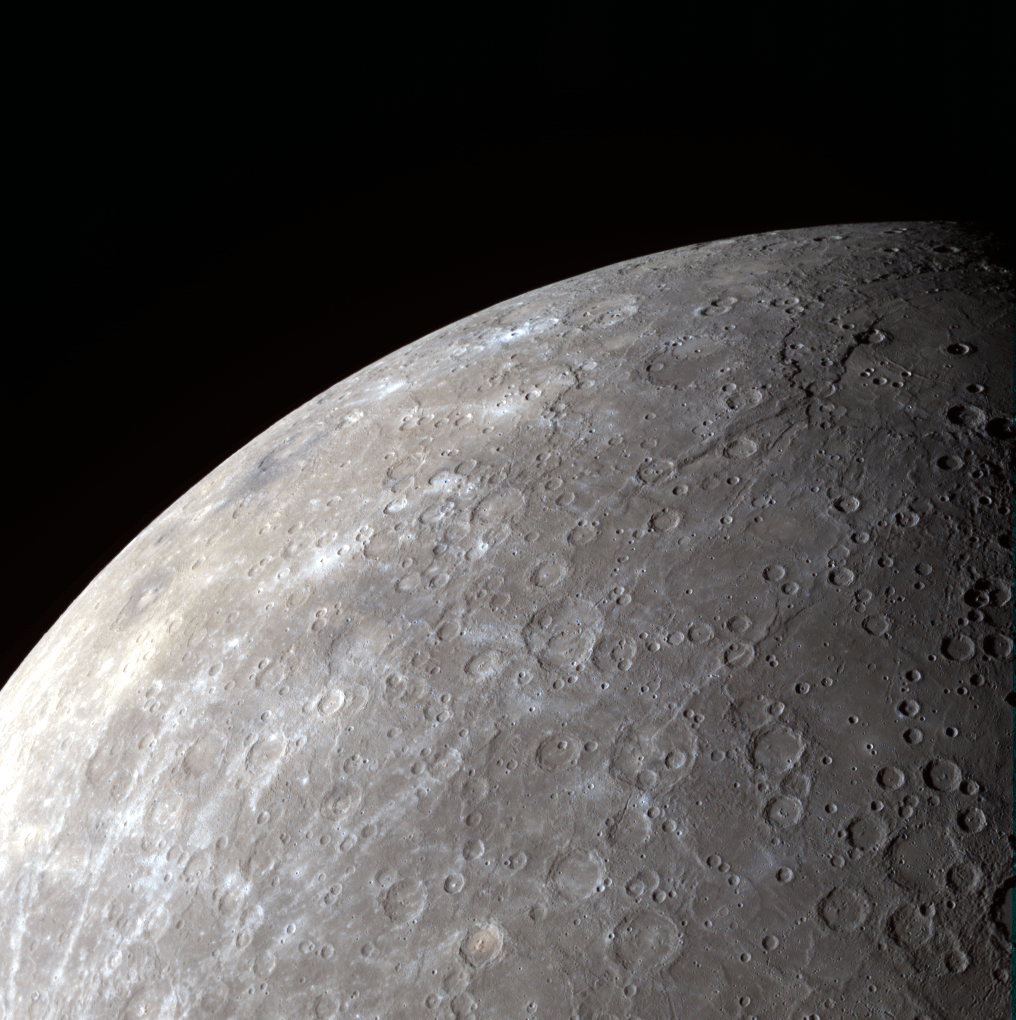[/caption]
NASA’s MESSENGER spacecraft, about to wrap up its first full year in orbit around Mercury, captured this view of the planet’s heavily-cratered southern hemisphere on August 28, 2011. Because of its orbit, MESSENGER gets particularly good panoramic views of Mercury’s underside.
Here’s why…
MESSENGER’s orbit, established on March 18, 2011 at 00:45 UTC, is not a simple circling path around the first rock from the Sun. Instead it is highly elliptical, bringing it 124 miles (200 km) above Mercury’s north pole at its closest and more than 9,420 miles (15,193 km) from its south pole at its farthest! (See diagram below.)
The close approaches over the northern hemisphere allow MESSENGER to study the Caloris basin, Mercury’s largest surface feature and, at over 960 miles (1,550 km) across, one of the largest impact craters in the entire Solar System.
The view of Mercury’s southern hemisphere above features some notable craters as well: the relatively youthful 444-mile (715-km) -wide Rembrandt basin is seen at top right, while the smaller pit-floor crater Kipling can be discerned to its left, just below the planet’s limb.
When craters are larger than 300 km in diameter, they are referred to as basins.
During its 12 months in orbit MESSENGER will have experienced only two days on Mercury! This is because Mercury rotates very slowly on its axis, completing a full solar day (sunrise to sunrise) every 176 Earth days. (And you thought your work day seemed to last forever!)

Find out more about the MESSENGER mission here.
Image credit: NASA/Johns Hopkins University Applied Physics Laboratory/Carnegie Institution of Washington.

